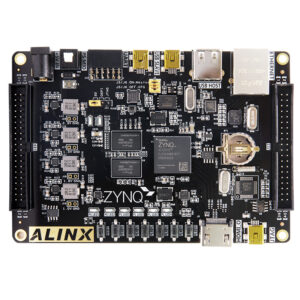If you are building a sound sensor for your microcontroller, chances are you settle on a LM386-based microphone amplifier. It’s cheap, readily available and doesn’t require too many external parts.
A nice feature of the LM386 is that it can drive a small speaker. This allows for an easy design and test of the amplifier in isolation, using a portable music player and a desktop speaker. Once the amplifier works fine, adding a microphone to complete the sound sensor should be easy.
Now let’s see what a LM386 is all about and it’s working principle.
Brief Introduction
Operational Amplifiers or Op-Amps are a little hard to explain, but essentially they take something small and make it big!

Op-amps are perfect when you need to take a signal and have it go much higher than the original, for example doing audio amplification. LM386 is made specifically for low voltage applications. Different Op-amps will have different requirements. The LM386 can take 4V-12V or 5V-18V depending on the wiring and pump that up 20 to 200 times. This circuit can work with batteries, requires minimum external parts and works from 4 to 18 Volts.
It can provide 125mW to 750mW, enough for any project that uses audio. The power output depends of the voltage. The power output is 125mW when the voltage is 6V. The voltage gain goes from 20 to 200 and the output is self-centering, so doesn’t need dual voltage as other amplifiers. It can be used on battery radios, tape players, intercoms, also, as ultrasonic amplifier. This chip is the “555” of the amplifiers.
Physical Features
The IC consists of an 8 pin dual in-line package (DIP-8) and can output 0.5 watts power using a 9-volt power supply. Figure 2 shows the Schematic diagram for LM386.

The inputs are ground referenced while the output is automatically biased to one half the supply voltages. The power drain is only 24milliwatts when operating from a 6V supply, thus making the LM386 as an ideal battery operation.
In order to make the LM386 a more versatile amplifier, two pins are provided with gain control. The pin1 and pin 8 have been attributed with a gain control facility which may be set externally. The gain is internally set to 20 (26db) to keep external part count low, but with the addition of an external resistor and capacitor between pins 1-8 the gain can be set to any value from 20 to 200 (46db). Gain as we know simply means the capacity or the amplifying level of the device up to which it is able to amplify the applied input low signal audio input.
When the pin outs are kept unconnected to anything, the internal 1.35K resistor sets the gain of the IC to 20. If a capacitor is joined across the above pin outs, the gain is suddenly lifted to 200. The gain may be simply made adjustable by connecting a pot in series with the above explained capacitor across the pin 1 and 8.
LM386 PINOUT
Let’s have a look at the pin out and see what role of each part plays?

- Pins 1 and 8 control gain- When not connected (NC), the amplifier gain is 20. Adding a 10uF capacitor between them gives a gain of 200. Intermediate values are also possible, as described in the datasheet.
- Pins 2- It is the negative input – GND.
- Pin 3- It is the positive input – i.e. the actual signal to be amplified.
- Pins 4 (GND) and 6 (Vs) provide the supply voltage for the amplification.
- Pin 5- It is the output. It is biased to 1/2 of the supply voltage Vs. In simple terms, this means that the signal there has two components: An AC component, which is the amplified input signal, plus a DC component of 1/2 Vs = 2.5V. This biased voltage cannot be fed directly to a speaker. A 250uF electrolytic capacitor is connected in series to filter out the DC component and the remaining AC goes to the speaker.
- Pin 7 is just named Bypass. It is used to pull the excess gain to ground, so the pin is connected to ground
An Example of LM386:-
A simple LM386 audio amplifier is shown in figure. The pin connections are made with respect to the Pin outs as explained above.

As we can see that output is biased to 1/2 of the Supply voltage Vs. In simple terms, this means that the signal there has two components: An AC component, which is the amplified input signal, plus a DC component of 1/2 Vs = 2.5V. This biased voltage cannot be fed directly to a speaker. A 250uF electrolytic capacitor is connected in series to filter out the DC component and the remaining AC goes to the speaker. So Audio output analysis in figure 6 shows that only half of the supply voltage is received while the Audio input analysis gets the double of it.


Thanks for reading the blog,
For more information about the product please visit: http://www.tenettech.com/product/4330/lm386-low-voltage-power-amplifieric
For more information about different products please visit: http://www.tenettech.com/category/1/products
For technical queries please drop an e-mail: info@tenettech.com






